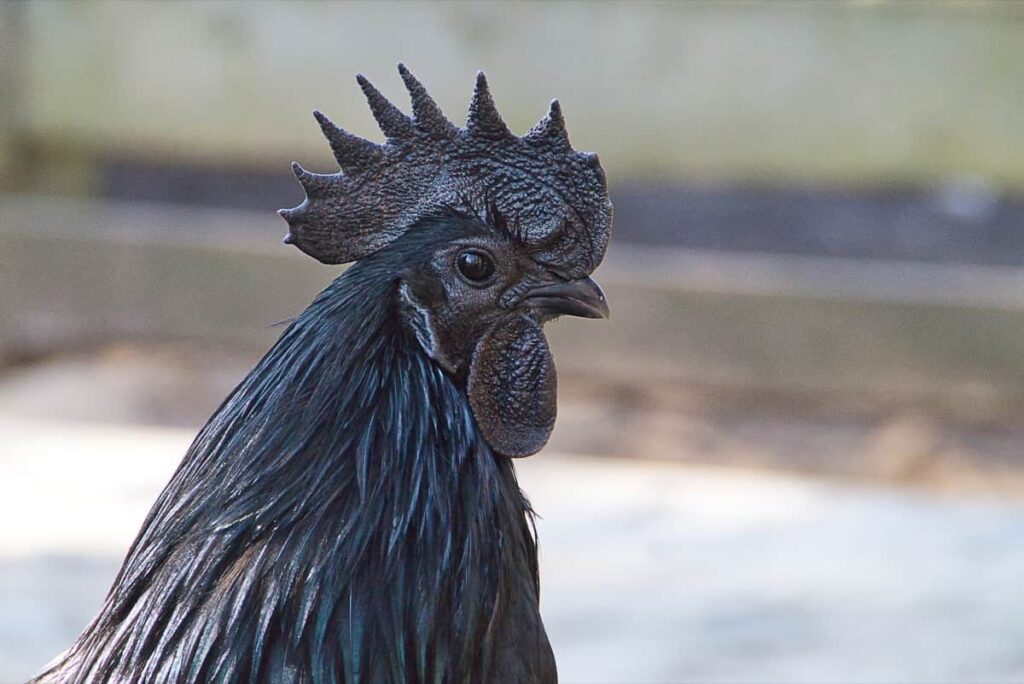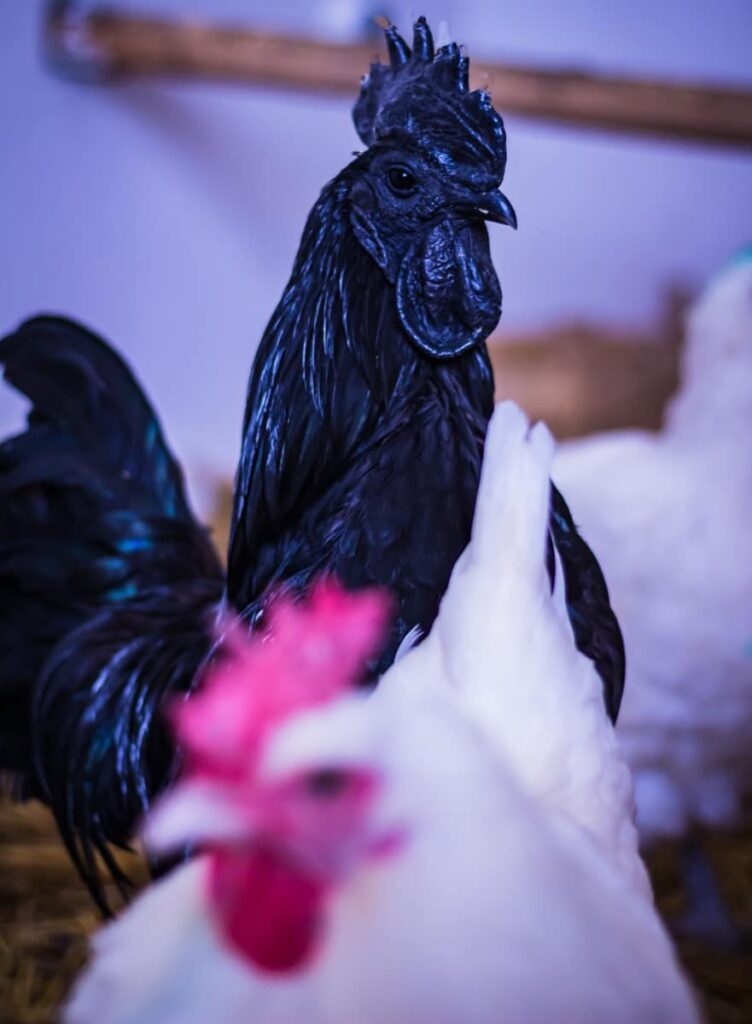The Ayam Cemani chicken is a rare breed originating from Indonesia. These chickens are all black, from their feathers to their meat, and they are considered lucky in some cultures. Despite their rarity, Ayam Cemani chickens are becoming more popular in the western world and are even being bred in the United States. If you’re thinking of getting your own Ayam Cemani chicken or are just curious about them, read on for our comprehensive guide.
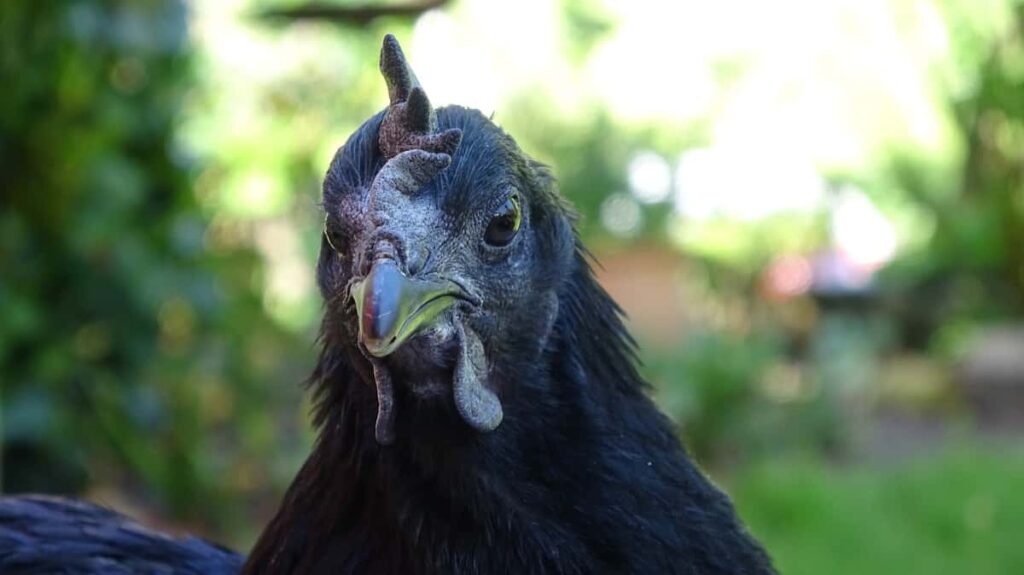
Ayam Cemani Chicken breed guide
What is an Ayam Cemani Chicken?
An Ayam Cemani chicken is a rare and exotic chicken originating from Indonesia. The Ayam Cemani is an all-black chicken with black feathers, skin, and meat. The breed is said to have originated in the village of Cemani on the island of Java. The Ayam Cemani is a relatively new and rare breed to the Western world and was only introduced in the early 2000s.
The Ayam Cemani is known for its unique appearance and culinary properties. The meat of the Ayam Cemani is said to be more tender and flavorful than that of other chicken breeds. The Ayam Cemani is also said to have medicinal properties and is used in traditional Indonesian medicine. If you want an Ayam Cemani chicken, be prepared to pay a high price. Unfortunately, these chickens are very rare and can cost upwards of $2,000.
In case you missed it: Understanding Backyard Poultry/Chicken Farming at Home: Check How this Guide Helps Beginners
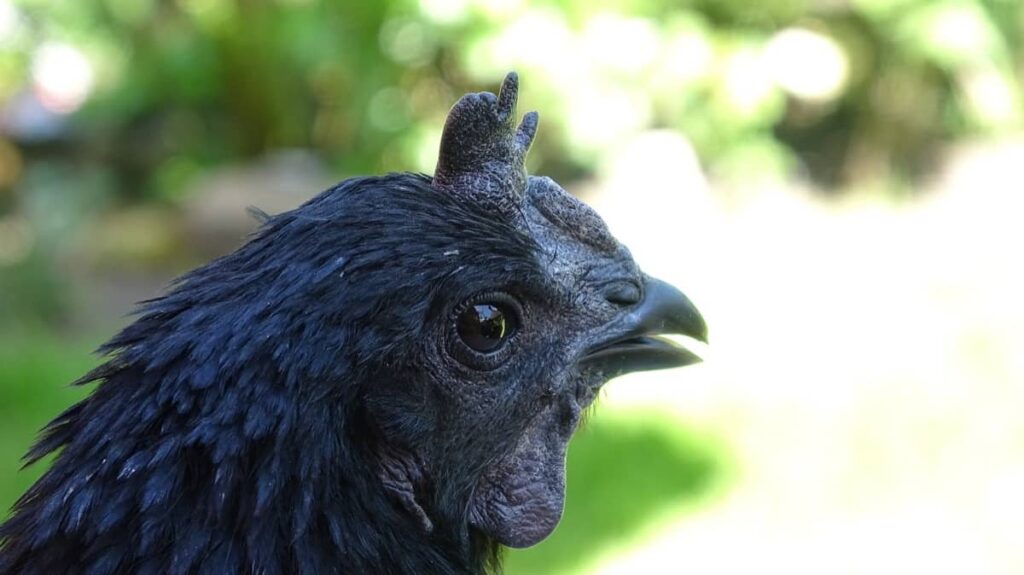
Where do Ayam Cemani Chickens come from?
Ayam Cemani chickens are originally from Indonesia, where they were first discovered in the village of Cemani on the island of Java. These rare and unique chickens are black, from their feathers to their beaks and feet. Ayam Cemani chickens are prized for their unusual appearance and meat, which is said to have a special flavor.
What are the physical characteristics of an Ayam Cemani Chicken?
Ayam Cemani chickens are a rare breed of chicken native to Indonesia. They are prized for their black feathers, which cover their entire body, including their internal organs. Ayam Cemani chickens are also known for their black meat and bones. The average Ayam Cemani chicken weighs between 3 and 4 pounds.
They have a small body size with long legs. Their beaks and wattles are black, as well as their tongue, comb, and earlobes. Ayam Cemani chickens do not have the traditional white stripes on their feathers like other breeds. This is due to a genetic mutation that causes all their feathers to be black.
What is the temperament of an Ayam Cemani Chicken?
As its name suggests, the Ayam Cemani chicken is a very docile breed. However, it is known to be calm and gentle, making it an excellent choice for first-time chicken owners or those with small children. This breed is also relatively quiet, so you won’t have to worry about it disturbing your neighbors.
In case you missed it: Common Country Chicken Diseases: Symptoms and Treatment
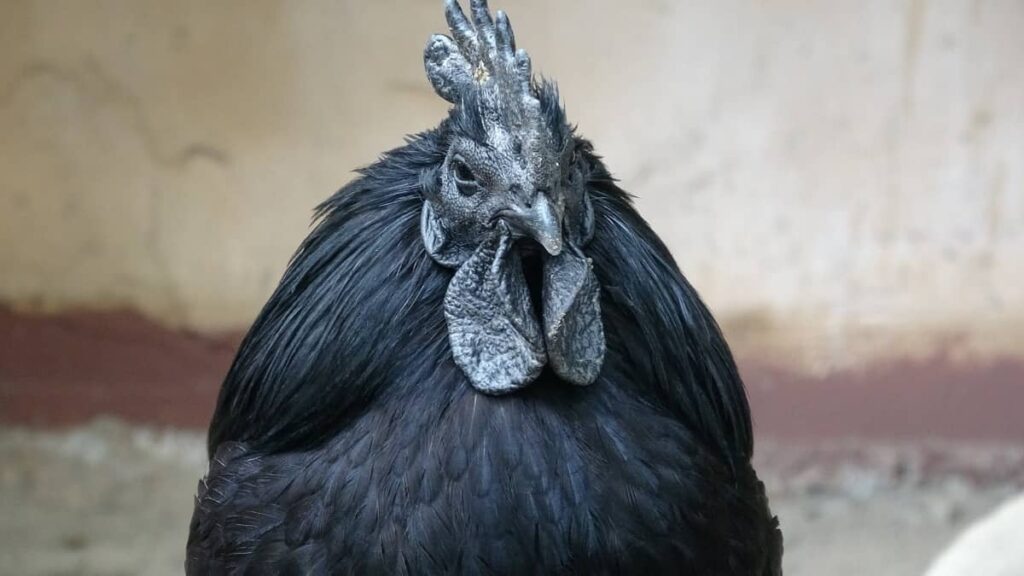
Ayam Cemani egg laying
Ayam Cemani chickens are known for their jet black feathers, resulting from a genetic mutation called fibromelanosis. This mutation also causes the chicken’s internal organs to be black. While the Ayam Cemani chicken is native to Indonesia, they have become popular in other parts of the world due to its unique appearance. Regarding egg production, Ayam Cemanis is not the most productive breed. Hens will typically lay around 80 eggs per year, which is significantly less than other breeds of chicken.
However, Ayam Cemanis make up for their low egg production with their large eggs. Each egg weighs approximately 50 grams, nearly double the size of a standard chicken egg. If you plan to bring a chicken that lays large eggs and has an unusual appearance, then the Ayam Cemani is a great option. Just be aware that they aren’t the most productive breed regarding egg laying. A dozen Ayam Cemani eggs can easily cost $100 or more!
Common health problems of the Ayam Cemani Chicken
A few common health problems can affect the Ayam Cemani chicken. One of the most common is blackhead, which is caused by a parasitic infection. Blackheads can cause serious health problems and even death in chickens, so it’s important to be aware of the symptoms and get your chicken treated if necessary. Another common health problem for Ayam Cemani chickens is gout. Gout is a condition that causes pain and swelling in the joints and is caused by a build-up of uric acid in the chicken body.
It’s important to catch gout early and treat it properly to avoid long-term damage to the joints. Finally, another common issue for Ayam Cemani chickens is respiratory problems. Respiratory problems can be caused by several things, including infectious diseases, dust or fumes in the environment, or even genetics. If you notice your chicken having difficulty breathing, it’s important to take your chickens to the vet for a check-up.
In case you missed it: Common Poultry/Chicken Diseases, Symptoms, and Treatment: Check How this Guide Helps Poultry Farmers
Caring Ayam Cemani Chickens
Assuming you have already purchased your Ayam Cemani chicken, there are a few things to remember when caring for them. First, they need plenty of space to roam and exercise. A good rule of thumb is at least 10 square feet per chicken. They also prefer to roost in trees or other high places, so be sure to provide some elevated perch for them.
Ayam Cemani chickens are also quite active and playful, so it’s important to have plenty of toys and enrichment items available for them. This can include anything from swings and perches to foraging toys filled with treats. Keep their environment interesting and stimulating; they will be happy and healthy chickens.
When it comes to food, Ayam Cemani chickens are not picky eaters. However, they require a higher protein diet than most other chicken breeds due to their rapid growth rate. A good quality chicken feed will give them all the necessary nutrients. It’s also important to supplement their diet with grit so that they can properly digest their food. Lastly, make sure they always have access to clean water.
In case you missed it: Farming Business Plan PDF: for Poultry, Livestock, Agriculture, Horticulture, Greenhouse, and Hydroponic
What do Ayam Cemani Chickens eat?
Ayam Cemani chickens are not particularly picky eaters and will consume various foods. However, it is very important to make sure that their diet is balanced and provides them with all the required nutrients they need to stay healthy. A good diet for Ayam Cemani chickens should include the following:
- Greens: spinach, kale, Swiss chard, etc.
- Fruits and vegetables: apples, carrots, tomatoes, etc.
- Grains: wheat, oats, barley, etc.
- Protein: meat (chicken, beef, pork), fish, eggs, etc.
- In addition to a balanced diet, Ayam Cemani chickens also require access to clean water.
Breeding Ayam Cemani Chickens
When breeding Ayam Cemani chickens, there are a few things to remember. First of all, these birds are not your typical chicken breed. They are quite rare, which means that finding a good breeder can be difficult. However, if you can find a reputable breeder, they will likely have a good stock of birds. When choosing Ayam Cemani chickens for breeding, selecting birds that are healthy and free from genetic defects is important.
This is especially important if you are planning on selling the chicks you produce. Healthy birds will fetch a higher price than those not in tip-top conditions. It is also important to consider the age of the chickens when selecting them for breeding. Younger birds are more fertile and have a higher chance of successfully producing offspring. Older birds may still be able to breed, but their fertility rates will be lower.
Once you have selected your breeding stock, it is important to provide your chickens with everything they need to be successful. This includes a clean and spacious coop, plenty of food and water, and access to fresh air and sunshine. Chickens that are well-cared for tend to be healthier and produce more offspring than those that are not. Following these tips can increase your chances of successfully breeding Ayam Cemani chickens.
In case you missed it: Contract Poultry Farming in India: Profits, Companies, Agreement, How it Works, The Pros and Cons
Briefly about the Ayam Cemani Chicken breed
| Chicken Name | Ayam Cemani |
| Colour | Black (complete body) |
| Weight | 4.5-6.5lb (males), 3.5-4.5lb (females) |
| Origination | Indonesia |
| Purpose of this Chicken | Eggs, meat and show (Good luck) |
| Chicken Size | Small to medium |
| Temperament | Active and strongly built |
| Weather tolerance | Suitable for all climatic conditions |
| Egg Colour | Black |
| Egg Size | Medium |
| Egg production | 70 to 80 eggs per year |
| Comb | Single |
| Broodiness | Not often |
| Feathered legs | No |
| Cost | $2000 onwards |
Conclusion
The Ayam Cemani chicken is a beautiful bird that is perfect and ideal for those looking for a unique and stunning pet. These chickens are not only fun to look at, but these are also friendly, making them great pets for families with children. If you are thinking about adding an Ayam Cemani chicken to your flock, be sure to check out our guide to learn everything you need to know about these amazing birds.
- Sheep Farming Business Plan for Beginners
- Aquaponic Farming at Home: A Step-By-Step Guide
- Profitable Village Farming Business Ideas in 2024
- High-Yield Aquaculture: Fast-Growing Fish for Farming
- Effective Fish Pond Construction Techniques for Beginners
- Irrigation and Water Management in Pineapple Farming
- Blossom to Harvest: Mastering Flowering and Pollination in Papaya Farming
- Pig Fattening Essentials: From Selection to Sale for Beginners
- Raising Wagyu Cattle: A Complete Guide for Premium Beef Production
- Soil Types and Their Water Holding Capacity
- Optimizing Irrigation Schedules for Coconut Groves for Enhanced Yield
- Espresso Your Garden: Coffee Grounds for Healthier Acid-Loving Plants
- The Best Soil Mix for Snake Plants: How to Mix Your Own Snake Plant Soil
- Green Thumb Success: Expert Tips for Cultivating Greenhouse Beans All Year Round
- Bloom All Year Round: The Ultimate Guide to Indoor Hyacinth Care
- Eco-Friendly Gardening: How to Make Liquid Fertilizer from Kitchen Waste
- Ultimate Guide to Grow Anise in Pots: Explore Seed Propagation to Harvesting
- Guide to Raising Chester White Pigs: Discover Breed Facts to Growth Management
- Mastering the Elegance: The Ultimate Guide to Weeping Cherry Tree Care, Planting, and Maintenance
- Ultimate Guide to Planting Garlic in Grow Bags: Growing Strategies for Beginners
- How to Fix Spider Plant Leaf-Related Problems: Natural and Organic Remedies
- 10 Reasons Why Your Tulsi Plant is Shedding Leaves: Home Remedies and Solutions
- Optimizing Growth and Yield: The Advantages of Palm Bunch Ash Fertilizer
- Utilizing Neem Oil Extract as a Natural Pesticide for Hydrangea
- From Soil to Harvest: Various Ways in Which Farmers Can Use AI Tools
- Steps to Encourage and Induce Citrus Flowers: A Comprehensive Guide
- How to Fix Snake Plant Leaf-Related Issues: Natural and Organic Remedies
- Transform Your Garden into a Fragrant Oasis with Raat Ki Rani (Night Blooming Jasmine)
- Discover the Ideal Chicken Breeds for Philippine Farms
- How to Create a Poultry Egg Farm Business Plan for Profits
- Grow Lemon Cucumbers Like a Pro: Insider Techniques for Bountiful Yields
- Ultimate Guide to Caring for Your Pink Princess Philodendron: Tips for Thriving Variegation
- Areca Nut Profit Per Acre: Calculating Yield and Cost of Cultivation
- How Kaveri Chicken is Becoming a More Profitable Breed in Indian Backyards
- Transform Your Barn: 9 Steps to Convert a Horse Stall into a Chicken Coop
- Exploring Suffolk Sheep Disadvantages with Limitations and Challenges


